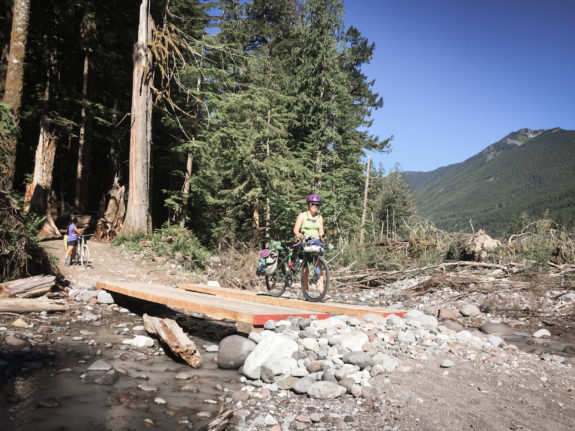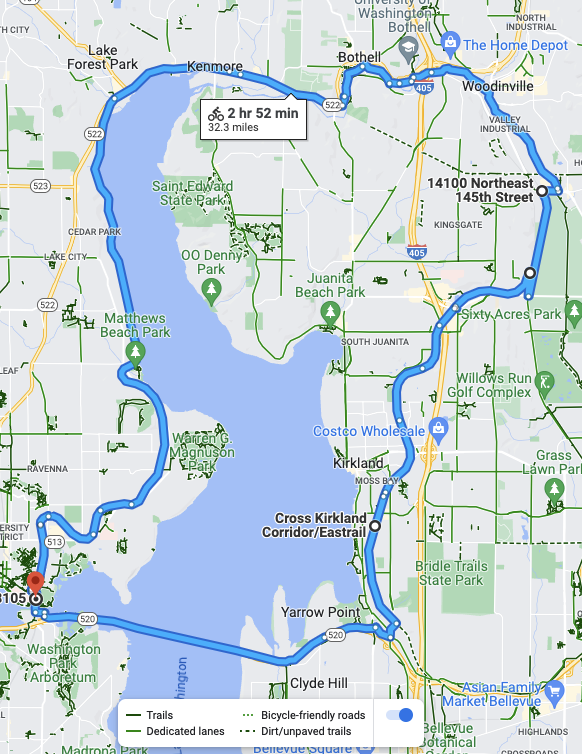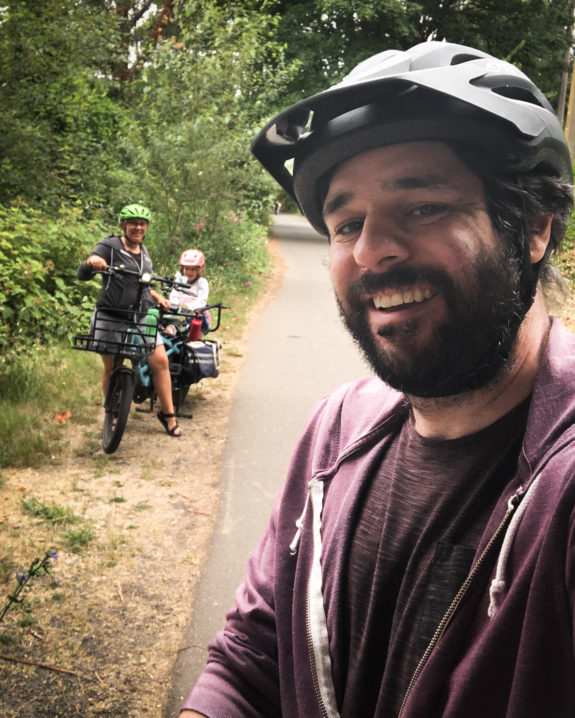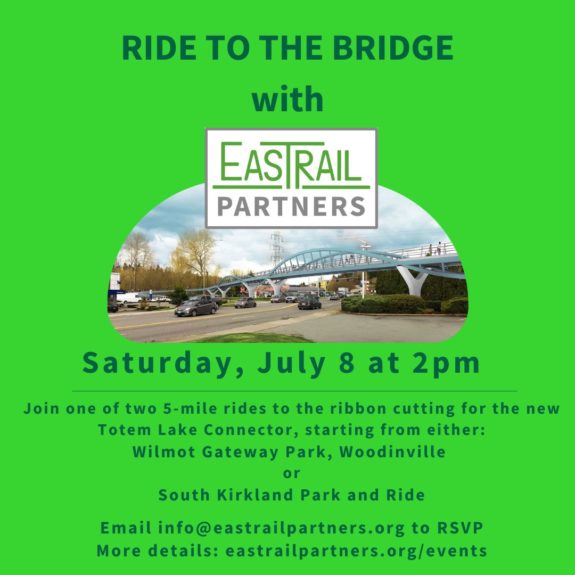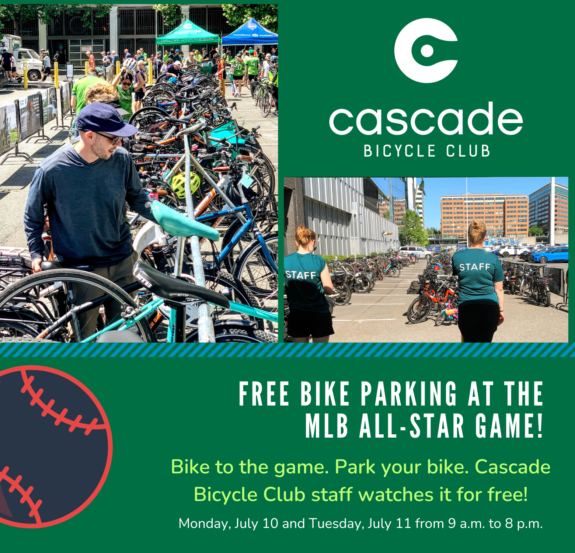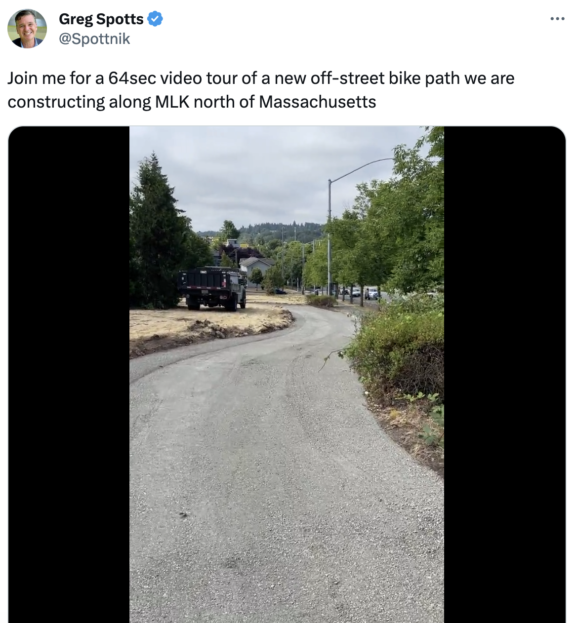
The Rainier Valley Neighborhood Greenway opened in 2017 with a key piece missing: A connection the final block or so to the I-90 Trail in Sam Smith Park.
“One of the coolest ideas in the plan is the new connection to the I-90 Trail,” I wrote in a September 2015 post about the greenway plan. “This was one of the more difficult puzzles in the whole route. All the other connections from the trail to the planned greenway route have ridiculously steep hills.” But when the route opened, it dead ended at the park with no clear way to get to the trail without hopping a curb and biking up a grassy hill. It has been that way ever since.
The problem was not Seattle, it was WSDOT. Sam Smith Park is a freeway lid that WSDOT built above I-90 as part of that freeway project. Even though SDOT was paying for and building the trail link, which would improve the connectivity of the state’s trail, WSDOT wanted to charge SDOT perpetual annual rent of $24,000 per year, increasing with inflation. But as Ryan Packer reported in November, the city and state had finally found a way forward.
Once the connection is in place, the Rainer Valley Neighborhood Greenway will be much more useful. The winding and hilly route travels along side streets near Rainier Avenue S as best as is possible. Though it was intended to act as something of an alternative to taking Rainier Ave, it is not comparable. The greenway is far hillier and longer than Rainier, which cuts a relatively flat diagonal across the valley’s street grid. There are many destinations along Rainier that the greenway does not serve. As a Rainier Ave alternative, it fails.
However, if you think about it as its own thing, a meandering and comfortable route through the neighborhood’s side streets, it’s mostly great (aside from one extremely steep block of 38th Ave S in Columbia City that should not be part of a supposedly all ages and abilities route). Neighborhood greenways are best when they are creating their own paths rather than when they are used as an alternative to installing bike lanes on a street that needs them. They have the ability to connect homes, parks, schools and more in a different way than we are used to. In infrastructure terms, a neighborhood greenway is really just a coordinated series of street crossing improvements, traffic calming and signage. But in a city with streets as confusing and hilly as Seattle, it’s especially useful to have a bread crumb trail to follow because if you make one wrong turn you might end up having to scale a very steep block.
If you’ve never ridden this route I highly recommend it, especially once the I-90 Trail connection is in place. You can take it all the way from I-90 to Rainier Beach, passing many neighborhood parks along the way. One popular alternative to the steep Columbia City section is to take Letitia Ave S and 35th Ave S between S Charlestown St and S Ferdinand St. Letitia is a lovely little street.

